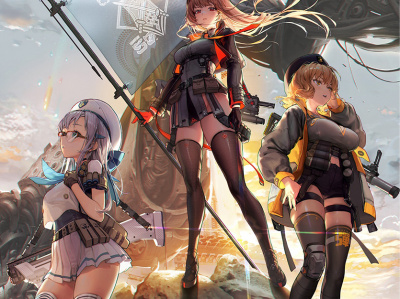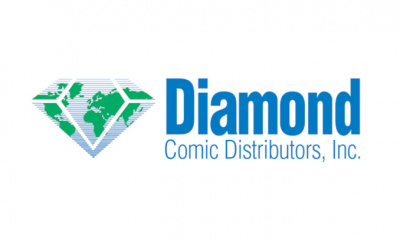
DC Comics Senior Vice President of Sales Bob Wayne and Executive VP of Sales, Marketing, and Business Development John Rood discussed the explosive debut of DC’s “New 52” initiative with ICv2. Wayne and Rood provide their perspective on the strong sales numbers posted by the first issue, on the targeting of DC’s highly effective marketing campaign, and on which format (paper or digital) has shown the most explosive growth in sales.
Maybe you can start by updating us on the status of your print sellouts and reprints?
Bob Wayne: Basically we have sold out of everything that has gone on sale so far, and everything that is going to go on sale next week.
What kind of overprints did you set for these books?
Bob Wayne: Larger than our normal overprints on stuff—deeper on the bigger titles, but healthy across the board. It just all got vacuumed up in a way that I have never seen before. The only thing that has been close to this would have been back around The Death of Superman, but that was focused on just a small number of titles and this seems to be across all 52 of these titles.
So on the first title, Justice League, there is going to be a gap when no copies are available?
Bob Wayne: Well, store-by-store there is going to be a gap because we don’t have them constantly available. The second printing, some of those we went ahead and busted out and they should be arriving at retail this week. There’s not a lot of the second printing in comparison to lots of the other stuff, so I don’t think they will last any significant period of time. The third printing will hit the following week (September 21st). We are keeping the product flowing, and we did that in part by setting the print run for the second printing without waiting to get orders from retailers. The bad thing is that sometimes you estimate correctly what you need and sometimes you don’t. And with the second printing of Justice League we ended up over subscribed by a good deal.
Thinking like a retailer, DC has done a ton of promotion on this, you are doing national television advertising, probably the biggest comic book marketing campaign that DC has ever done—how did you end up guessing low, you had to expect you were going to sell at ton?
Bob Wayne: We based the order based on what the retailers ordered. I think the retailers and DC both underestimated what the demand was going to be, and I think that demand just exceeded our expectations and the retailers’ expectations. It’s not a perfect solution, but as problems go, I would rather have this problem than having a lot of books on the shelf that no one cares about.
John Rood: Do you expect us to guess perfectly?
Not at all, it’s just that the scale of everything you have done on this has been huge.
John Rood: We are delivering the issues that the retailers and consumers need in a timely manner. This is a good problem to have in terms of miscalculating the global enthusiasm for this so far.
Do you have any feedback yet on what’s happening in any channels other than the comics store channel?
Bob Wayne: We don’t because those channels don’t report back as fast, and almost no one in those channels has figured out my email address over the years. But this is the most enthusiastic response I have ever seen for stuff since The Death of Superman period, which is the only thing that is somewhat analogous to this. This is just off the charts.
Let’s talk about digital sales of the “New 52.”
John Rood: We are very pleased with them, but they haven’t exceeded our expectations in the way that the physical sales of the books have. Both formats have been wildly successful, but I would have to say that our physical sales have exceeded our expectations much more than the digital sales.
Do you have any feedback from comic stores or other sources about what kind of people are buying these books?
John Rood: I have been delighted by hearing anecdotally at least a half dozen times from stores that indicate that there are new customers coming in, but they are also telling me that old customers are coming in after a year or two off, and the sales staff is like “What are you doing here?” And they say, “Well I had to come in.” Now that just warms my heart.
Bob Wayne: I’ve visited stores in California and Texas during the last week and one of the things that I have witnessed more than once would be young teenage readers—one talking to another one going, “This is the “New 52” starting from the beginning, and now we won’t have to listen to all these old guys telling us what it was like before.” I had to walk away, because my first response was like yours, to laugh. It was kind of funny. It was almost like there is this group of kids and this is their starting point, in the same way that for a lot of readers The Crisis on Infinite Earths was a starting point for a lot of DC readers.
What about the longtime readers? When this was first announced there was some pushback from longtime collectors particularly in regards to the renumbering of issues?
Bob Wayne: I think that a lot of those folks have looked at how a lot of their other collections have been restarted numerous times, some by us, some by other publishers, and they’ve found themselves wavering and trying some of the books. I am sure that there are some folks where this is an exit point, but I think that there are a lot more people who are treating it as an entry point. And I think that some of those who initially didn’t like the idea are having second thoughts about their first reaction and are now very interested in seeing what’s going to happen with Geoff and Jim on Justice League, with Grant on Action. With almost every comic we published this week, I had someone tell me it was their favorite. I had people saying their favorite was Men of War, their favorite was OMAC. It was all across the board--it wasn’t all going toward just Action Comics, Detective, and Batgirl, which was really kind of exciting for us to hear.
One question about your new consumers—what was the target demo for your national advertising?
John Rood: We welcome all consumers, but there’s a buying demo. To spend our resources in the most efficient way possible, our buying demo was adults 18-34, knowing that we were going to get favorable spillage south of 18 and favorable spillage of viewers and Website visitors, and theatre patrons north of 34 years of age. In light of the shows that we have been buying we realized that we would be delivering females as well as males, so we just tried to give a general focus to the entertainment consumer, the pop culture enthusiasts. This was all beyond a significant spend inside “the beltway” so to speak to comics and book sites.
Other than the scale of the response, has there been anything else over the events of the past ten days that has been a surprise?
Bob Wayne: I think I was surprised that all the books from the second week sold out, and that all the books from the next week have also sold out. Retailers are trying to “rightsize” their inventories and we have had tremendous order increases at the Final Order Cutoff for the fourth week of books. The volatility of this and how fast the retailers are moving to increase their inventory and increase their orders on some of these upcoming issues is very heartening. It’s not the old traditional, “Well I sold ten so now maybe I should only order eight, so I will order seven of the next issue.” It’s really much more aggressive as retailers are attempting to get ahead of the curve.
Can you characterize the percentage change in your Final Order Cutoff numbers for the fourth week?
Bob Wayne: I would say that the average increase in the fourth week was probably more than 150% of the changes we had in the first week. If retailers ordered 10 extra copies on the week one titles, there are ordering 15 extra copies on week four titles.
What about relative to the base orders?
Bob Wayne: We have strong titles every week, and we haven’t seen anything disproportionate, just a general “leveling up” of trying to catch up to demand. We have ten books in September where we now have print runs over 100,000. It’s been awhile since anyone has had ten books in a month over 100,000 copies.
John Rood: Getting back to your question about surprises, I have been pretty delighted about some people who have been coming out of the woodwork and saying with some contrition that we told them so. Folks that I don’t think believed us at the Roadshow, that didn’t believe us when we said we would spend significantly in coop, and in publicity and in advertising, and moreover that we had a quality imperative across the 52 books that we are committed to and that we are going to hold to for a long, long time. It’s been great and surprising to hear people who have been negative and doubtful at first, come back and express enthusiasm and appreciation to us.
Bob Wayne: I think we have upgraded a group of people who were skeptical to being positive about this. I don’t know if you have heard this, but we are continuing the variants, the returnability, and the deeper discounts for a fourth month. With the numbers coming in so strong, we want to make sure that we can buffer some of the risk of the retailers so that they can keep going and be as aggressive as possible.
John Rood: You folks at ICv2 are well aware of how sales in the comic market are reported via press releases from publishers and Diamond, and how that’s an incomplete picture of what actually happened. I would say a couple of things. One, the story on the “New 52” won’t be told until after the spring of 2012 when the first collected editions come out. We’re not trying to win the month. We are tying to get the books in as many hands as possible. So while it’s fun to keep score and see who’s joined the 100K club or who’s made the 200K list, I am more interested in how the entire 52 titles have collectively really risen in prominence. That plus profitability and the media and merchandise opportunities that arise from this great seismic change—that’s the kind of stuff we follow.
What are the differences between the consumers who are buying in the direct market versus those who are downloading the digital comics, or those who will buy the trade collection in bookstores next spring?
John Rood: We intend to do more research with our retailer partners and with consumers to get a better sense of that. We want to see how the audience has changed with the aid of the “New 52.” We expect it to drive sales in an additive and complementary manner, bringing new readership in globally, lapsed fans and readers who previously wouldn’t or couldn’t get to a comic shop. We don't see it as any sort of simple switchover from physical to digital readership. We are not in it to accelerate any change in reading behavior—we just want to bring more people to the party.








